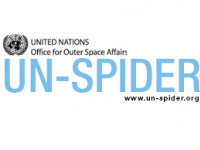
United
Nations
Office for Outer Space Affairs
UN-SPIDER Knowledge Portal

This practice was applied to the Amazon rainforest south of Santarém, Pará, in Brazil between 2015 and 2019 to monitor rainforest deforrestation in that period.
This method can be applied to any other area of study in which change detection from one landcover type to another is desired.

Neither UN-SPIDER nor the Regional Support Offices (RSOs) or their partners take any responsibility for the correctness of outputs from this recommended practice or decisions derived as a consequence.